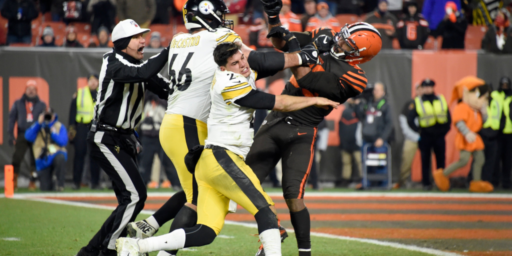BUCK ROGERS HELMETS
US News reports,
As part of the U.S. Army’s futuristic Objective Force Warrior program, Rockwell Collins is developing the new “Land Warrior” helmet. Equipped with video and vision technology, it will allow a soldier to transmit real-time video of a combat zone or to view video images sent by helicopters. Via a drop-down monocle on the helmet, the soldier will be able to visually access maps, documents, or GPS data. “For instance, if a soldier spotted a vehicle in the distance, he could immediately find out if it was friendly or the enemy,” Jones says. In addition, a lightweight wireless radio affixed to the helmet will provide one-on-one communication, even at a whisper level, in the middle of noisy battlefield. A sensor inside the helmet receives and transmits sound waves using “bone conduction,” a process that uses the natural ability of the human head to register sound waves. These helmets should be in use in the field toward the end of the decade.
This is all very cool sounding, even though this kind of thing has been talked about for years. Two questions: How much does it weigh? And who is going to process all this information?
Helmets are very uncomfortable. One would guess helmets plus various gee-whiz gizmos would be heavier than comparable helmets minus said gizmos.
I’m not sure I’d want video feeds coming in while I’m trying to engage the enemy. On the other end, the ops center doesn’t have time to digest all the info it gets now; how is it going to handle getting real time video from every trooper in the field?






I’ve read a fair amount about this technology. I don’t think the weight will be that bad by the time they deploy it.
Mostly the data will be processed by computers, not humans. In many ways it will reduce the mental work on the combatant. If a soldier sees a vehicle on the horizon and it is painted green he can quit worrying about it.
With smart weapons both in his hands and above, a red painted vehicle gets eliminated quickly.
War has always been about knowledge. Getting that knowledge to and from the war fighter will define the next generation of warfare.
Saw this helmet (and the suit that monitors you, medicates you, and administers a tourniquete [sp?] if needed!) at Natick labs this past Spring. The helmet itself is not that heavy. Most of the main electronics are “off-loaded” remotely or to be worn elsewhere on the soldier’s body. The heads up display looks substantially like the display of a first person shooter video game (situational awareness, health (!), ammo, position, commo channels open, etc.). Today’s youth will likely easily adapt. Crusty old colonels and Sergeant’s Major will have a tougher time.
Flypay,
You make a good point. And, thankfully, the colonels and sergeants major generally won’t be wearing this stuff; they’ll be ensconsed in a TOC somewhere.